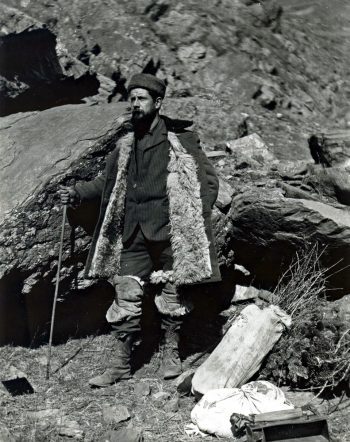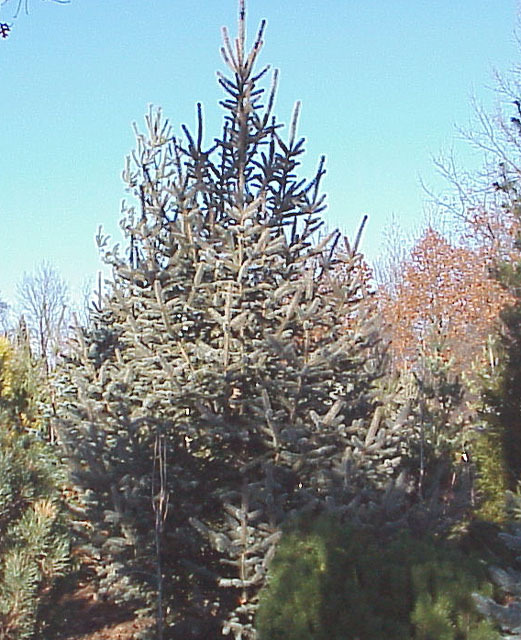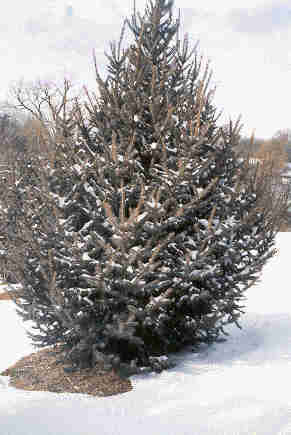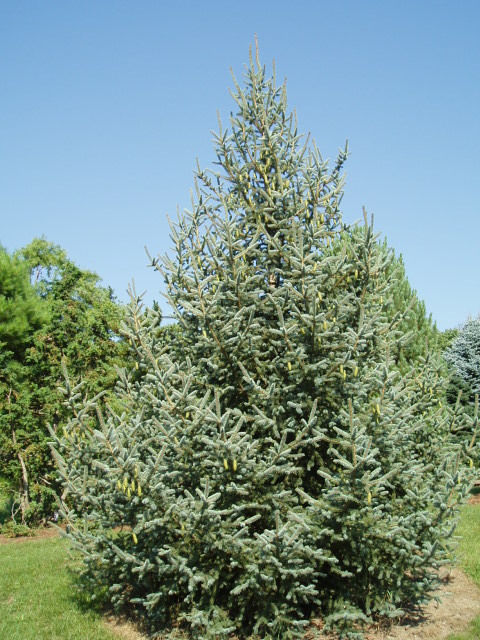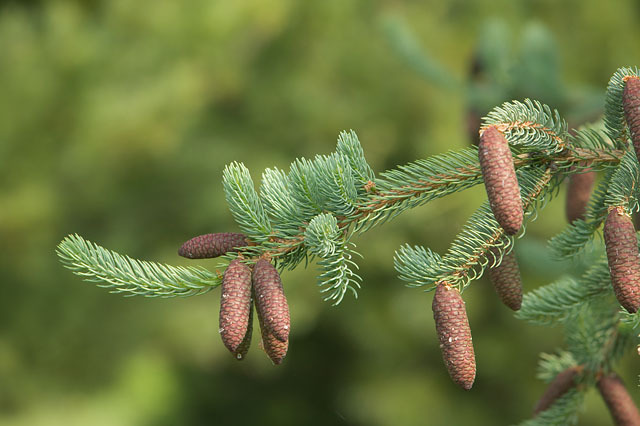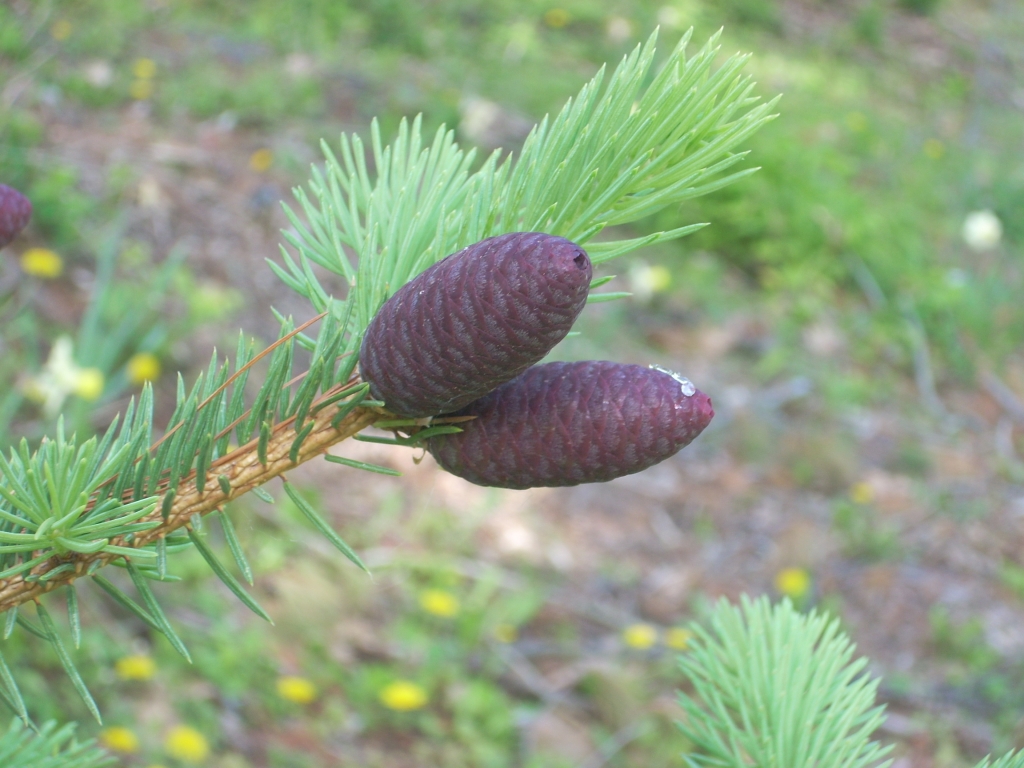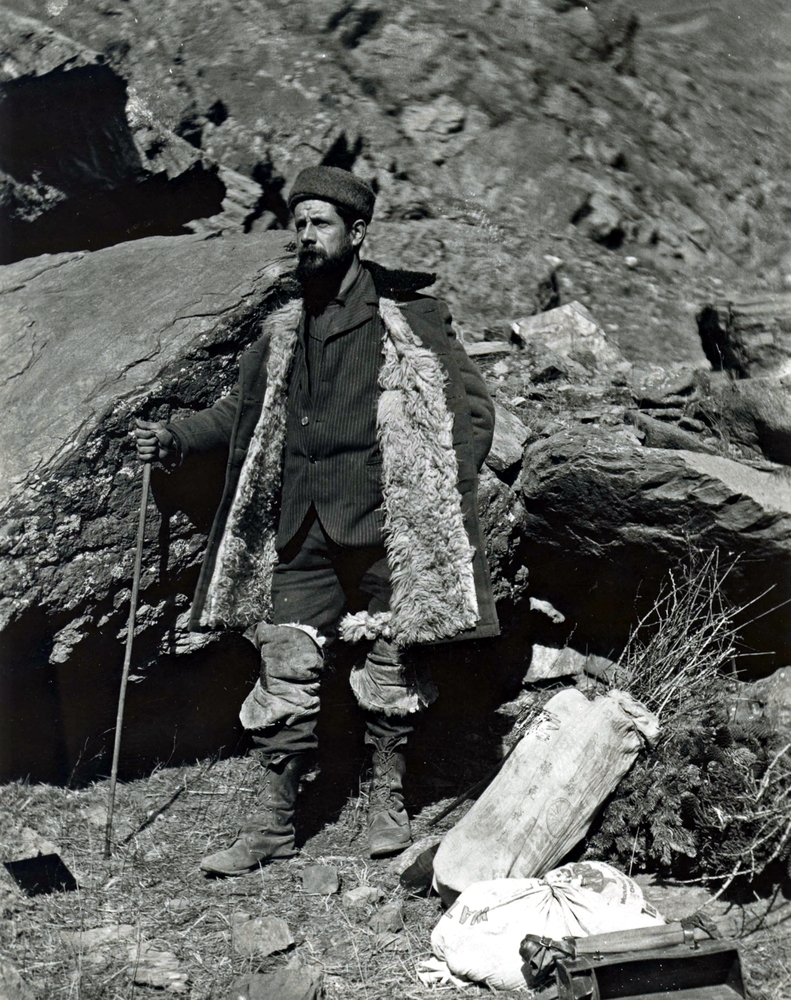Picea meyeri, as described in 1914 by Alfred Rehder (1863-1949) and Ernest Henry Wilson (1876-1930) in Plantae Wilsonianae, an enumeration of the woody plants collected in Western China for the Arnold Arboretum of Harvard University during the years 1907, 1908 and 1910, edited by Charles Sprague Sargent (1841-1927). It is commonly known as Meyer's spruce; and well as 白扦 (baiqian) in the Chinese language. The species name honors Frank N. Meyer (1875 - 1918), a collector for the U.S. Department of Agriculture who collected the type specimen on February 25th, 1908, at the temple of "Tchai-ling-tse" on the Wutai shan (Shanxi province) at 9,900 feet (3,000 m) elevation. Considering that the Wutai is 10,100 feet (3,058 m) tall, this temple must be near the summit. Meyer later died during a subsequent collecting trip in China.
Description. Meyer's spruce is an evergreen, coniferous species of tree that grows to mature heights of 100 feet (30 m) tall; with a trunk up to 24 inches (60 cm) in diameter, measured at breast height; and a conical crown.
Distribution. This species is native to China - Gansu, Hebei, Nei Mongol, Shaanxi, and Shanxi provinces, growing in the mountains at elevations of 5,200 to 8,900 feet (1,600 - 2700 m) above sea level.
Hardy to USDA Zone 6 - cold hardiness limit between -10° and 0°F (-23.2° and -17.8°C).
Ethnobotany. Timber is used for construction, poles, bridge building, furniture, and wood pulp. Meyer's spruce is also cultivated for afforestation and as an ornamental where its popularity is increasing in the eastern United States, where it is being used to replace Colorado spruce (Picea pungens), which is more disease-prone in the humid climate there.
